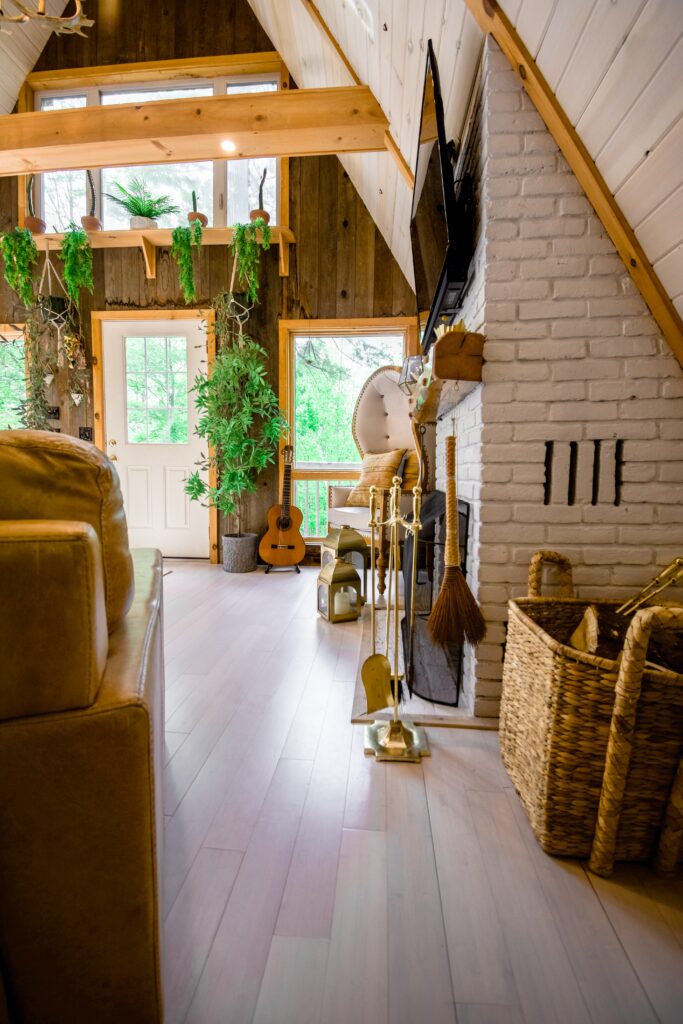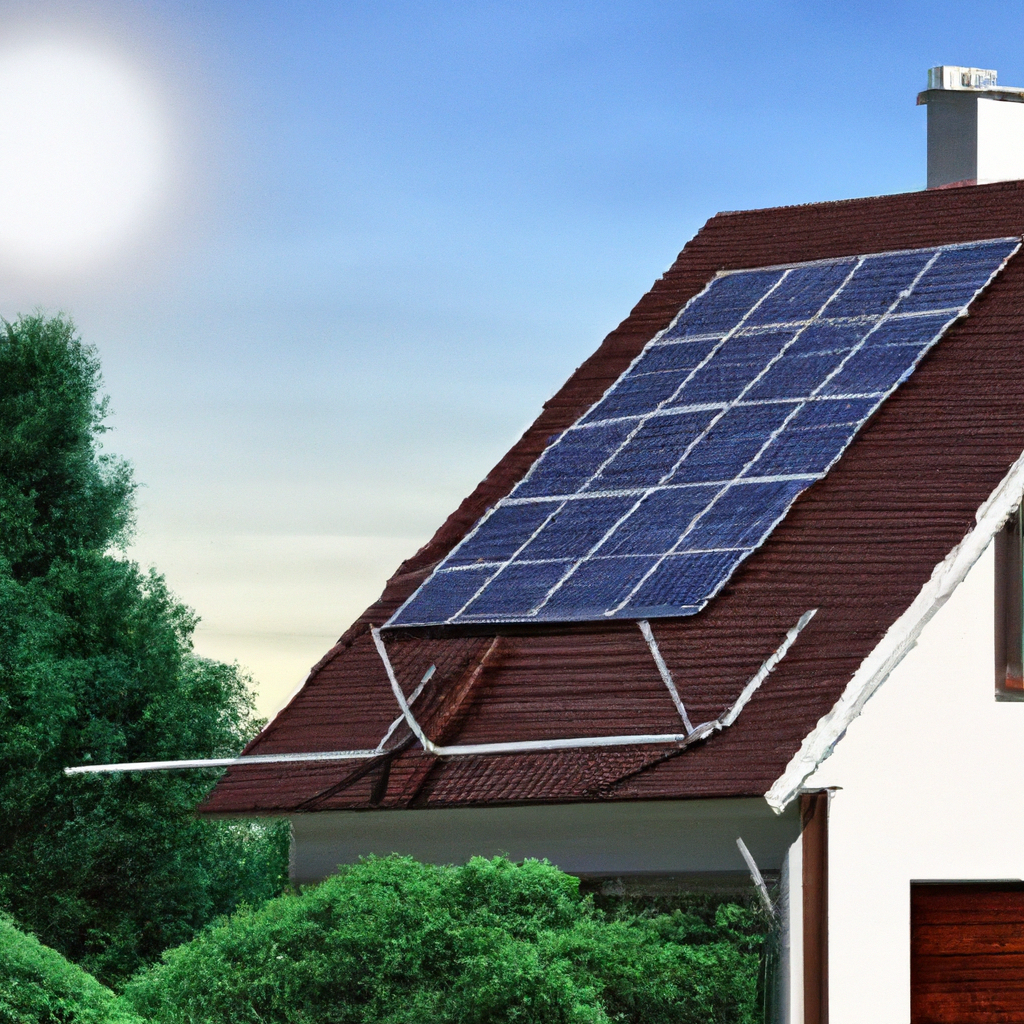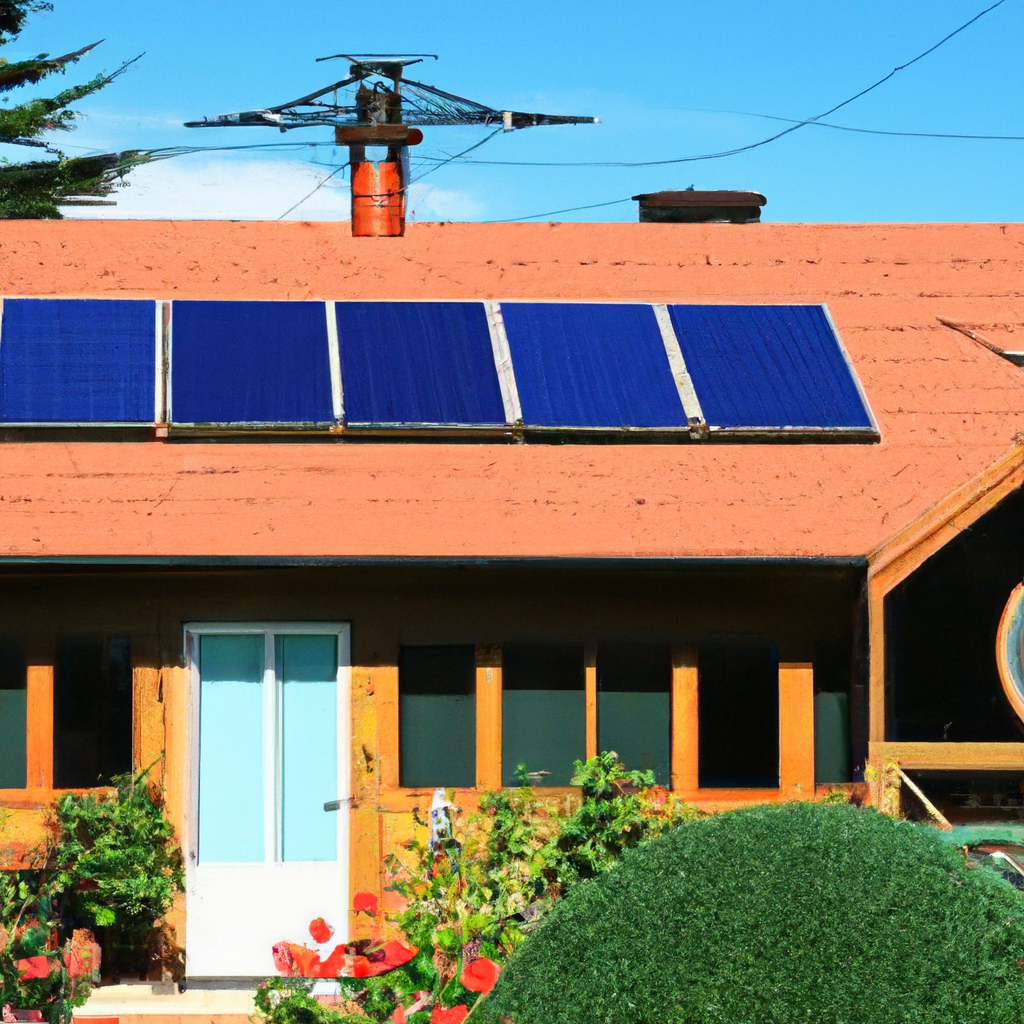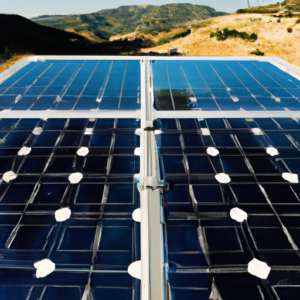Imagine living in a home that doesn’t rely on external sources for its energy needs, where you have complete control over your utilities and environmental impact. Now, you might be wondering, how much does it typically cost to build a self-sustaining home? Well, let’s embark on a journey together to explore the fascinating world of sustainable living and discover the average costs involved in creating your eco-friendly oasis. Get ready to be inspired and informed as we uncover the secrets behind these innovative dwellings.
Check Out Our Top Eco Friendly Product Picks On Amazon Here
General Considerations
Location
When considering building a self-sustaining home, one of the first things you need to think about is the location. Whether you choose an urban or rural setting will greatly impact the overall cost and feasibility of your project. Urban areas may have higher land costs and stricter building codes, while rural areas may offer more freedom but may require additional resources for utility connections.
Size
The size of your self-sustaining home will depend on your needs and preferences. Consider the square footage, number of rooms, and amenities you desire. It’s important to strike a balance between having enough space for your lifestyle and keeping the construction and maintenance costs manageable. Additionally, think about outdoor spaces such as gardens or patio areas that can enhance your self-sustainable living experience.
Design
The design of your self-sustaining home encompasses various aspects, including architectural style, number of floors, and layout. Choose a design that aligns with your personal taste and functional requirements. Emphasize energy efficiency and passive solar design to optimize the use of natural resources. This can include features like solar panels, large windows for natural light, and proper insulation to reduce energy consumption.
Materials
Selecting the right materials is crucial for building a durable and energy-efficient self-sustaining home. Consider the foundations, framing, exterior walls, roofing, insulation, windows, doors, and finishes. Look for materials that are sustainable, eco-friendly, and have high insulation values. These choices will not only reduce your home’s carbon footprint but also lower your energy consumption in the long run.
Labor
Building a self-sustaining home requires a range of skilled and unskilled labor. Hiring a general contractor who specializes in sustainable construction can save you time and ensure a high-quality outcome. Subcontractors may be needed for specific tasks such as electrical or plumbing work. It’s important to consider the timeframe for completing the project and the availability of skilled labor in your area.
Permits and Fees
Obtaining the necessary permits and paying fees is an essential part of building a self-sustaining home. Building permits ensure that your construction meets safety and environmental regulations. Impact fees may be required to cover the strain on local services caused by new construction. Additionally, you’ll need to consider utility connections for water, electricity, and sewage. Hiring an architect and engineer to create detailed plans will also incur costs.
Off-Grid Systems
One of the key aspects of a self-sustaining home is utilizing off-grid systems to generate and conserve energy. Solar power is a popular option, harnessing the sun’s energy through solar panels. Wind power can also be utilized if your location receives sufficient wind. Geothermal systems tap into the Earth’s natural heat for heating and cooling. Rainwater collection systems help reduce reliance on external water sources, while wastewater treatment and composting toilets minimize water waste and environmental impact.
Expected Lifetime
Consider the expected lifetime and durability of your self-sustaining home. Constructing with high-quality materials, like reinforced concrete or sustainable wood, can ensure longevity. Regular maintenance is also essential to extend the lifespan of your home. Incorporating home maintenance costs into your budget is crucial to preserve the value of your investment.
Counting the Green: Exploring the Typical Costs of Building a Self-Sustaining Home
Maintenance Costs
While building a self-sustaining home can reduce long-term energy costs, it’s important to consider ongoing maintenance expenses. Regular maintenance may include tasks such as checking solar panels, maintaining geothermal systems, and inspecting insulation for wear and tear. Budgeting for these costs can help you properly maintain your self-sustaining home and ensure it continues to operate efficiently.
Financing Options
There are various financing options available for building a self-sustaining home. Self-funding allows you to have full control over the project but may require considerable upfront savings. Loans and mortgages tailored for sustainable homes are also available from some financial institutions. Additionally, grants and incentives may be offered by local governments or organizations promoting sustainable living. Crowdfunding through online platforms can also be a viable option to fund your self-sustaining home construction.
Location
Urban vs. Rural
Choosing between an urban or rural location will greatly impact the cost and feasibility of your self-sustaining home. Urban areas typically have higher land costs and more stringent building codes. However, they may offer better access to resources, such as water and electricity connections. Rural areas may provide more freedom in terms of design and construction but may require additional investment in infrastructure and utility installations.
Land Cost
The cost of land is a significant consideration when building a self-sustaining home. Urban areas tend to have higher land prices due to demand and limited availability. On the other hand, rural areas often provide more affordable land options. Researching land prices in your desired location and considering any potential changes in value over time can help you make an informed decision.
Access to Resources
Consider the availability of essential resources like water, electricity, and waste management systems when selecting your location. Urban areas generally have existing infrastructure for utility connections, which can simplify the construction and reduce costs. In rural areas, you may need to invest in well drilling, solar panels, or septic systems to ensure self-sustainability. Assess the feasibility and cost of accessing these resources in your chosen location.
Climate
The climate of your selected location plays a vital role in determining the design and functionality of your self-sustaining home. Consider factors such as temperature fluctuations, rainfall, and sun exposure. Design features like passive solar design, proper insulation, and rainwater harvesting can be tailored to optimize energy efficiency and maximize comfort in different climates.
Local Building Codes
Understanding local building codes is crucial to ensure compliance and obtain necessary permits for your self-sustaining home. Urban areas often have stricter regulations compared to rural areas. Familiarize yourself with zoning laws, building height restrictions, setbacks, and any other specific requirements to avoid complications during the construction process. Enlist the help of professionals, such as architects or contractors, to navigate the local building codes effectively.

Check Out Our Top Eco Friendly Product Picks On Amazon Here
Size
Square Footage
Determining the square footage of your self-sustaining home is essential for planning and budgeting purposes. Consider your lifestyle, family size, and future needs when deciding on the size. Keep in mind that a smaller home generally requires fewer resources for construction and maintenance.
Number of Rooms
The number of rooms in your self-sustaining home will depend on your specific requirements. Consider the number of bedrooms, bathrooms, living spaces, and any additional rooms, such as a study or a home gym. Each room adds to the overall cost of construction, so strike a balance between functionality and budget.
Amenities and Features
Consider the amenities and features you want to incorporate into your self-sustaining home. This can include energy-efficient appliances, smart home technology, or systems that promote sustainability, such as greywater recycling or a vegetable garden. Remember that each added feature may increase the cost, so prioritize based on your needs and budget.
Outdoor Spaces
Outdoor spaces are an important aspect of a self-sustaining home, connecting you with nature and providing additional living areas. Consider incorporating features such as a garden, patio, or deck into your design. These spaces can be used for growing food, entertaining, or simply enjoying the outdoors. Plan accordingly to optimize your outdoor experience while maintaining harmony with the surroundings.
Design
Architectural Style
Choosing the architectural style of your self-sustaining home is a personal decision that should consider both aesthetic preferences and functionality. Whether it’s modern, traditional, farmhouse, or minimalist, ensure that the design aligns with your taste and complements the surrounding environment.
Number of Floors
Decide on the number of floors for your self-sustaining home based on your needs and zoning regulations. A single-story design may be suitable for those who prefer a more accessible and open layout, while multiple floors can accommodate larger families or provide separation between different living areas. Consider the additional costs of building upwards, including the need for stairs or elevators.
Layout and Floor Plan
The layout and floor plan of your self-sustaining home should be well-thought-out to maximize functionality and flow. Consider the relationship between different rooms and ensure that spaces are appropriately sized and proportioned. Aim for an open concept design that allows for natural light to flow throughout the home, enhancing energy efficiency and providing a welcoming atmosphere.
Energy Efficiency
Integrating energy-efficient features into your design is a key aspect of building a self-sustaining home. This can include strategic window placement to maximize natural light, insulation to reduce heat loss or gain, and the use of energy-efficient appliances and lighting. Properly designing your home with energy efficiency in mind can significantly reduce your energy consumption and costs over time.
Passive Solar Design
Passive solar design is a sustainable building technique that utilizes the sun’s energy to heat and cool a home naturally. By carefully considering factors such as building orientation, window placement, and shading devices, you can optimize solar gain in the winter and minimize it in the summer. This design approach reduces the need for artificial heating and cooling, making your self-sustaining home more energy-efficient.

Materials
Foundations
The foundation of your self-sustaining home is crucial for stability and long-term durability. Common options include concrete slabs, crawl spaces, or full basements. Consider the soil conditions, climate, and local building codes when selecting the appropriate foundation type. Additionally, explore eco-friendly options such as recycled materials or insulated concrete forms that provide improved energy efficiency.
Framing
Framing materials play a vital role in the structural integrity of your self-sustaining home. Traditional materials such as wood are commonly used due to their versatility and affordability. However, consider exploring alternative options like steel or engineered lumber, which are more sustainable and offer enhanced resistance to environmental factors such as pests or moisture.
Exterior Walls
Choosing the right exterior wall materials is essential for insulation and protection against the elements. Options range from traditional wood or vinyl siding to more sustainable choices like fiber cement or recycled materials. Consider the climate in your area and prioritize materials with high insulation values to reduce energy consumption.
Roofing
The roof of your self-sustaining home should provide protection from weather elements while also offering potential energy-generating capabilities. Consider durable materials like metal, slate, or clay tiles that have a longer lifespan and lower maintenance requirements. Additionally, explore the integration of solar panels or green roofs to further enhance your home’s sustainability.
Insulation
Proper insulation is key to reducing energy consumption by minimizing heat loss or gain. Depending on your location and climate, choose insulation materials with high R-values, such as cellulose, fiberglass, or spray foam insulation. Ensure that your self-sustaining home is effectively insulated in walls, roofs, and floors to optimize comfort and energy efficiency.
Windows and Doors
Windows and doors play a significant role in energy efficiency and natural lighting. Opt for energy-efficient windows that have low emissivity coatings and double or triple glazing. Consider the framing material as well, such as sustainable wood or vinyl. For doors, choose well-insulated options that help prevent drafts and air leakage.
Finishes
The choice of finishes for your self-sustaining home should consider aesthetics, durability, and eco-friendliness. Consider sustainable flooring options like bamboo, cork, or reclaimed wood. Opt for low-VOC paints and finishes to improve indoor air quality. Choose materials that are easy to clean and maintain to reduce long-term maintenance costs.
Cabinetry and Appliances
Selecting eco-friendly cabinetry and appliances is essential for a self-sustaining home. Look for products made from sustainable materials, such as bamboo or reclaimed wood, and consider options with low or no formaldehyde content. Choose energy-efficient appliances that carry the Energy Star certification. These choices will not only reduce your environmental impact but also lower your energy consumption and utility bills.
Labor
General Contractor
Hiring a general contractor experienced in sustainable construction is highly recommended for building a self-sustaining home. They can oversee the entire project, ensuring that the design and materials align with sustainable principles, and manage subcontractors and the overall construction process. A reputable general contractor can help streamline the project, ensure quality workmanship, and potentially save you time and money.
Subcontractors
Depending on the complexity of your self-sustaining home project, you may need to hire subcontractors for specific tasks such as electrical work, plumbing, or HVAC installation. It’s important to research and vet subcontractors carefully to ensure they have experience working with sustainable building practices. Coordinating with subcontractors and incorporating their work into the overall project plan is essential for a successful construction process.
Skilled and Unskilled Labor
Building a self-sustaining home requires a mix of skilled and unskilled labor. Skilled labor includes professionals such as carpenters, electricians, and plumbers who have specialized knowledge and expertise. Unskilled labor may include general construction workers who assist with tasks that require less specialized training. Determine the labor needs for your specific project and ensure that you have access to a skilled workforce to maintain quality and efficiency.
Timeframe
The timeframe for building a self-sustaining home can vary depending on various factors, including the size and complexity of the project, availability of labor, and weather conditions. It’s essential to establish a realistic timeline with your general contractor and subcontractors and factor in any potential delays or unforeseen challenges. A carefully planned construction schedule can help ensure a smooth and timely completion of your self-sustaining home.

Permits and Fees
Building Permits
Obtaining the necessary building permits is a crucial step in the construction of your self-sustaining home. Building permits ensure that your construction plans meet safety and environmental regulations set by local authorities. The process typically involves submitting detailed architectural and engineering plans for review and obtaining approval before construction can begin. Be prepared for potential costs associated with permit application fees and inspections throughout the construction process.
Impact Fees
In some areas, impact fees may be required for new construction projects. These fees are intended to cover the strain on local services, such as schools, roads, or utilities, resulting from the increased population or demand caused by new development. The specific fees and requirements vary by location, so it’s essential to research and budget for potential impact fees when planning your self-sustaining home.
Utility Connections
When building a self-sustaining home, consider the costs associated with utility connections. These can include hooking up to the local water supply, obtaining an electrical connection, or installing a septic system. Urban areas generally have existing utility infrastructure, simplifying the process and reducing costs. In rural areas, you may need to invest in well drilling, solar panels, or a rainwater collection system to ensure self-sustainability.
Architectural and Engineering Plans
Creating detailed architectural and engineering plans is necessary to obtain building permits and ensure the successful construction of your self-sustaining home. Hiring professionals to develop these plans incurs costs, but it is essential to have accurate and comprehensive documentation. The plans should detail the design, materials, and structural elements necessary for the construction process. Working closely with architects and engineers is crucial to translate your vision into functional and buildable plans.
Off-Grid Systems
Solar Power
Harnessing solar power is a popular off-grid solution for self-sustaining homes. Solar panels capture sunlight and convert it into electricity that can power your home. Depending on your location and energy needs, a combination of rooftop solar panels and battery storage systems can provide a reliable and sustainable energy source. Research the solar potential in your area and consult with solar energy professionals to determine the best system size and configuration for your self-sustaining home.
Wind Power
If your location experiences sufficient wind speeds, wind power can be a viable off-grid energy solution. Wind turbines can generate electricity to supplement or replace the need for grid-supplied power. Determine the average wind speed in your area and consult with renewable energy experts to assess the feasibility and cost-effectiveness of a wind power system for your self-sustaining home.
Geothermal Systems
Geothermal systems utilize the Earth’s natural heat to provide heating and cooling for your self-sustaining home. By tapping into the stable temperatures underground, geothermal heat pumps can efficiently heat or cool your living spaces. This environmentally-friendly option can significantly reduce your reliance on traditional heating and cooling systems, resulting in energy savings. Assess the geological conditions of your location and consult with geothermal system specialists to determine the suitability and cost of implementing this system.
Rainwater Collection
Rainwater collection systems are a valuable addition to any self-sustaining home. These systems capture and store rainwater for various uses, such as watering gardens, flushing toilets, or household cleaning. Depending on the climate in your area, rainwater collection can help reduce reliance on external water sources and conserve water. Consider the size and type of rainwater collection system that best suits your needs, and consult with professionals to ensure proper installation and water quality management.
Wastewater Treatment
Implementing a wastewater treatment system ensures that your self-sustaining home manages and treats wastewater in an environmentally responsible manner. These systems can minimize the impact on local water sources by treating water onsite before release or reuse. Options range from septic systems to more advanced technologies like constructed wetlands or aerobic treatment units. Determine the wastewater treatment requirements in your area and consult with experts to select the appropriate system for your self-sustaining home.
Composting Toilets
Composting toilets are an eco-friendly alternative to traditional flush toilets that can be incorporated into a self-sustaining home. These systems decompose waste into nutrient-rich compost, which can then be used in gardens or for landscaping purposes. Composting toilets reduce water usage and minimize the need for traditional sewage systems. Consider the availability of composting toilet options, regulations, and maintenance requirements when deciding on the suitability of this system for your self-sustaining home.
Heating and Cooling Systems
Selecting efficient heating and cooling systems is crucial for a self-sustaining home’s comfort and energy use. Options include radiant floor heating, geothermal heat pumps, or high-efficiency HVAC systems. Determine the climate conditions in your area and the energy requirements of your home to choose the appropriate system. Energy-efficient heating and cooling systems can significantly reduce your energy consumption and contribute to the sustainability of your self-sustaining home.

Expected Lifetime
Durability of Construction
Building a self-sustaining home with long-term durability in mind is essential to maximize the lifespan of the structure. Selecting high-quality materials, proper construction techniques, and regular maintenance can help ensure the structural integrity of your home. Considering factors such as climate, local building codes, and the reputation and experience of the construction team can contribute to a durable and long-lasting self-sustaining home.
Quality of Materials
Choosing high-quality materials is crucial to ensure the longevity of your self-sustaining home. Opt for durable, weather-resistant, and sustainable materials that will stand the test of time. Conduct thorough research on the materials you plan to use, considering factors such as lifespan, maintenance requirements, and their ability to withstand environmental factors like moisture, pests, or extreme temperatures.
Maintenance Requirements
Regular maintenance is an important aspect of preserving the longevity and value of your self-sustaining home. This may include tasks such as checking solar panels for efficiency, inspecting insulation for wear or damage, and servicing HVAC systems. Budgeting for routine maintenance costs can help you keep your self-sustaining home in optimal condition and minimize the need for costly repairs in the future.
Financing Options
Self-Funding
Self-funding your self-sustaining home construction offers maximum control over the project but requires substantial upfront savings. Consider saving money specifically for this purpose or reallocating existing funds. This option allows you to avoid interest payments and maintain full ownership of the property. However, it can be a longer-term commitment that may require careful financial planning.
Loans and Mortgages
Several financial institutions offer loans and mortgages specifically tailored for sustainable or self-sustaining home construction. These options provide the flexibility to finance your project while spreading the cost over time. Research lenders who specialize in sustainable financing and compare loan terms, interest rates, and repayment options. It’s essential to consider your ability to make regular payments and evaluate the overall cost of borrowing.
Grants and Incentives
Many local governments, organizations, and utility companies offer grants and incentives to encourage sustainable construction practices. These incentives may include tax credits, rebates, or financial assistance for implementing energy-efficient systems or using eco-friendly materials. Explore local programs and incentives available in your area and determine eligibility criteria and application processes. Incorporating these incentives into your financing plan can significantly reduce the overall cost of building your self-sustaining home.
Crowdfunding
Crowdfunding platforms provide an alternative option for financing a self-sustaining home. These online platforms allow individuals or groups to contribute funding for your project in exchange for rewards or equity. Creating a compelling campaign that showcases your vision, sustainability goals, and the benefits of your self-sustaining home can attract funding from like-minded individuals or organizations. Crowdfunding can be a viable option, but it requires effective marketing, transparency, and the ability to communicate your project to potential supporters.
In conclusion, building a self-sustaining home requires careful consideration of various factors, from location and design to materials and financing options. By taking into account these general considerations and exploring sustainable practices, you can create a self-sustaining home that aligns with your values, reduces your environmental impact, and provides a comfortable and efficient living space for years to come.
Check Out Our Top Eco Friendly Product Picks On Amazon Here




